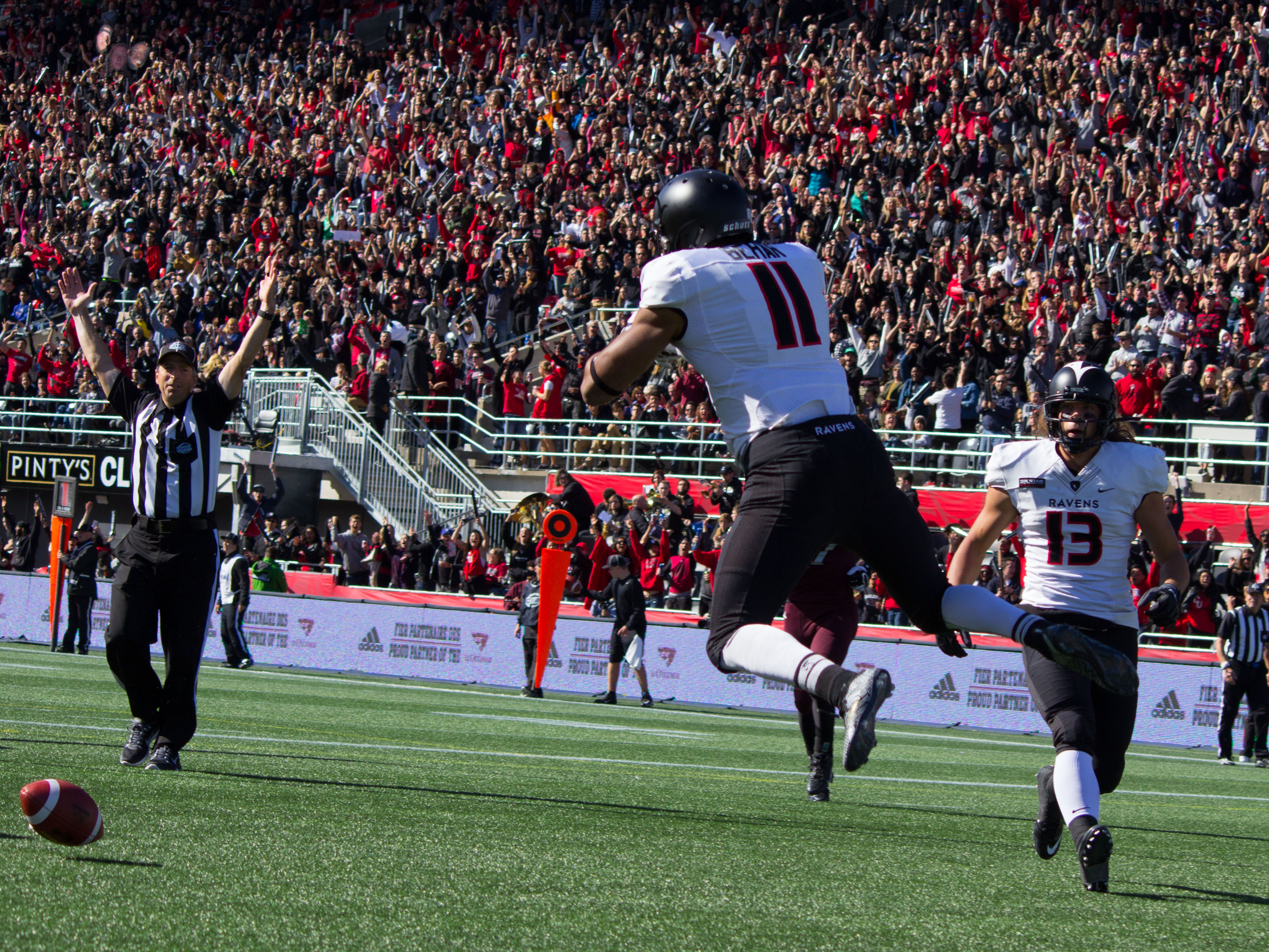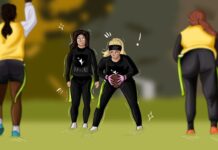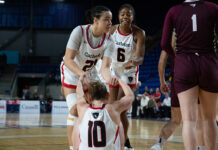Panda-monium took over the TD Place stadium Oct. 3 as the Carleton University Ravens faced off against the University of Ottawa (U of O) Gee-Gees in the annual Panda Game.
The first Panda Game was held in 1955 after Brian McNulty, a student at the U of O, decided something needed to be done to spice up the rivalry between the two teams.
McNulty came up with the idea of using a stuffed panda named Pedro as the Gee-Gees’ mascot, and enlisted the help of local jeweller Jack Snow to stage the first ever panda kidnapping.
In the years that followed, Pedro became the face of the game, with both schools fighting to be the one to take him home.
Pedro’s lengthy résumé includes a failed bid for president of the Carleton Students’ Council, being held hostage by the Queen’s University Panda Liberation Organization, and being transported to the game in an armoured Brinks truck.
The original Pedro retired in 1976 at the tender age of 24, and was replaced by a copper trophy.
Over the years, the game was the source of many pranks from students from both sides, which helped fuel the rivalry and, at times, threatened the continuation of the game.
At its peak, the Panda Game attracted more fans than any other regular season game in Canadian university football.
However, the latter years of the Panda Game were characterized more by the drunken antics of the fans, rather than the game itself.
Following the dissolution of Carleton’s football program at the end of the 1998 season, the Panda Game faded away as the Gee-Gees became Ottawa’s only university football team.
Fans of the rivalry would have to wait until 2013, when Carleton revived its football program.
The first Panda Game in the new era was held on Gee-Gees turf at Lees Stadium, in front of a sold-out crowd of 4,200 fans. The Gee-Gees won against the newly revived Ravens team 35-10.
“I think it’s important because it’s something that traditionally the entire city kind of gets involved in,” said Jen Elliott, the sports information and events officer at the U of O. “The entire city knows that it’s happening, and so it’s one of the times where university sport is really in the spotlight.”
In 2014, the game moved to the newly built TD Place stadium. A crowd of 12,500 fans saw the Ravens pull off a 33-31 win, after a last-second Hail Mary pass from quarterback Jesse Mills found its way into the hands of wide receiver Nate Behar.
Carleton’s athletic director Jennifer Brenning said playing at TD Place is helping the game grow.
“It just gives you that opportunity to be much bigger in terms of how many people can see the game and come out and celebrate,” Brenning said. “It puts the game on the map.”
“I think now with playing it at TD Place where it’s a beautiful, first class facility, it gets people off campus, it gets people interacting with a huge group of students from their campus, [which] doesn’t happen too often outside of … the orientation week,” Elliott said.
This year’s game attracted a crowd of 17,596 people, the largest attendance in Canadian Interuniversity Sport this season.
“It just brings out that pride in the two schools from the alumni, the faculty, staff and students. It’s about bragging rights,” Brenning said. “I think because we have these two schools in this community it really brings that school spirit out.”
For Sam Cox, a fourth-year Carleton public affairs and policy management student, the highlight of the game is cheering for the Ravens as a part of Red Zone.
“The best part about the game for me is the dramatic rivalry and how good the football is—the game is always back and forth right to the bitter end, making it a nail biter for all fans,” Cox said.
Ravens head coach Steve Sumarah said the Panda Game is unique due to the magnitude of the rivalry between the two schools.
“There’s other good rivalries obviously in this country, but just because of the sheer volume of people that come out from the community and from the two universities, I think it’s very unique,” Sumarah said. “I think the kids that have an opportunity to play in it have kind of a once-in-a-lifetime experience to be a part of something like that.”
“What makes it such a special game is the amount of history behind it, the fact that the first game was played in 1955 and it still exists today on a massive level is unreal,” Cox said.
“I’d like to see it in the next couple of years be a sell-out,” Sumarah said. “I think it should be the game of the year in this country, and I think it’s well on its way to that.”






